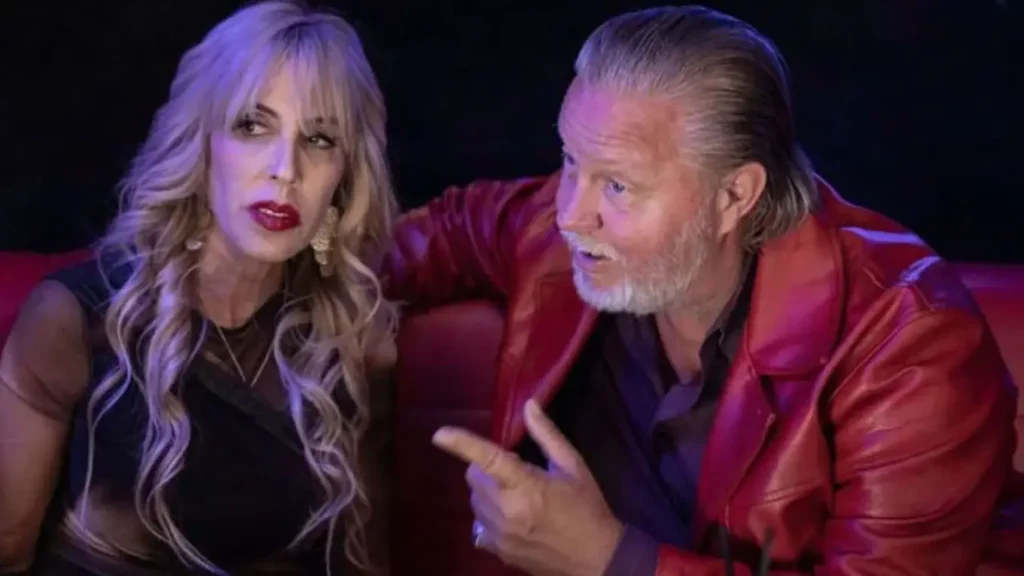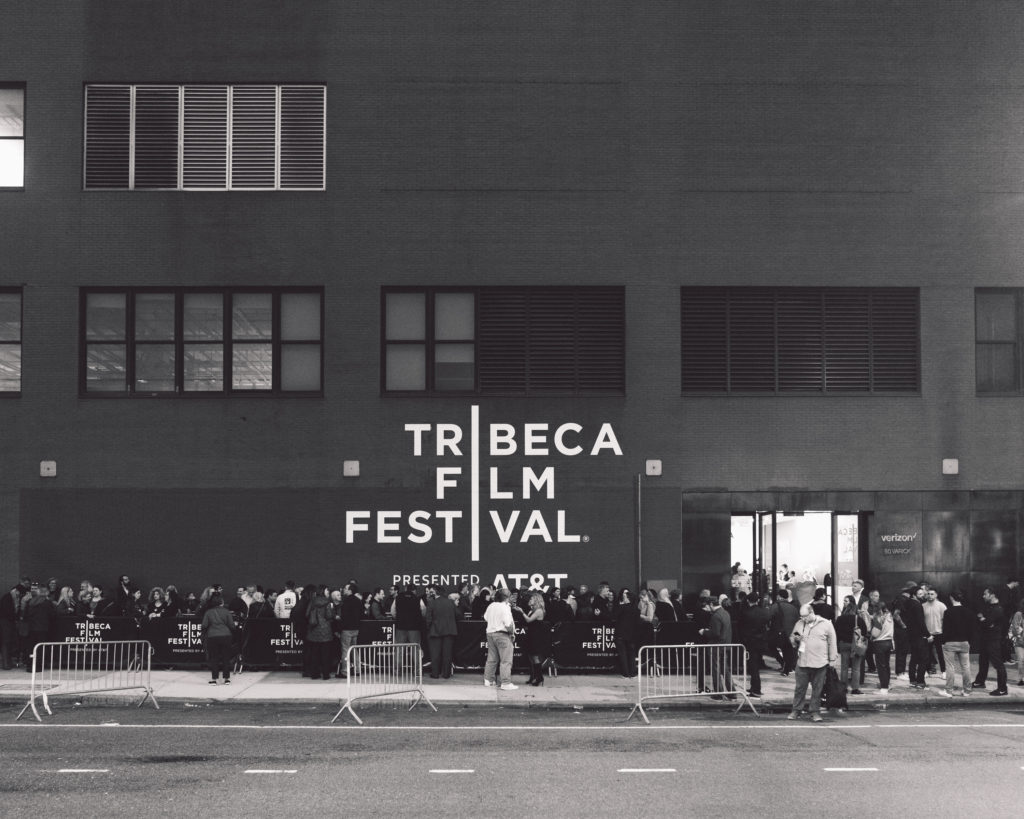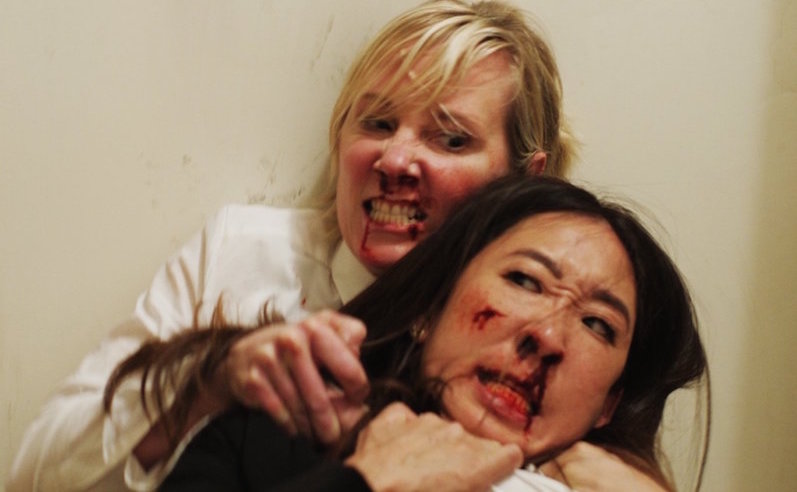EVERYONE ASKED ABOUT YOU lifts the veil on Hollywood’s darker side with the story of Simone, a traumatized former child star navigating her adult acting career and tumultuous relationship with her film producer boyfriend, Jack. Playing the duo at the center of the film are the couple who crafted the production behind the scenes, actor/writer/director/producer JOHN LACY and actor/producer RACHEL BAILIT. They are joined in Everyone Asked About You by a cast that includes Michael Wiles, Patrick Gallagher, Werner Daehn, Khrystyne Haje, and the late actor/filmmaker Henry Jaglom.
As a performer, Bailit has acted in hit series such as NYPD Blue, Desperate Housewives, and Tim and Eric Awesome Show, Great Job!, as well as Jaglom’s film Festival in Cannes. Lacy has appeared in films including Zodiac, Just Mercy, and Joker: Folie à Deux; and previously wrote and directed the indie features Custody Road and Rosebud Lane. Inspired by the works of John Cassavetes and Jean-Luc Godard, Everyone Asked About You won the Grand Prize for Best Feature Film at the Golden State Film Festival and the Best Director Prize at Indie Vegas Film Festival.
Everyone Asked About You hits streaming platforms and Los Angeles’s Laemmle Royal Theater on October 28, courtesy of BayView Entertainment. We talked to writer/director/producer/star John Lacy and producer/star Rachel Bailit about bringing the film to the screen.
__
COLIN McCORMACK: Where did the initial conception for the film come from?
JOHN LACY: It came from my three and a half decades of being in this industry and loving Hollywood. The last film I made, Rosebud Lane, was very much about my love of cinema, about a father and son who connect on the common language of film. That was my love note to Hollywood, so I wanted to make something that balanced that out with what I’m not so proud of. Every industry has its downsides. The documentary Showbiz Kids came out, and then, Quiet on Set, about the Nickelodeon scandal, and of course, the ongoing objectification and sexualization of women in the industry, the Me Too movement, and Harvey Weinstein. All of that was coming to a head when Rosebud Lane was doing the festival circuit, so I started writing my next script.
Then I fell in love with this gorgeous young lady, who happens to be an immensely talented actor, and I wrote the role for Rachel Bailit. So that was it, being with Rachel and wanting to get something off my chest about the industry. I wanted to do it in an artistic way that captured the French New Wave spirit, which are the films that Rachel and I both gravitate to, from the ’60s and ’70s. I wanted to do something very Cassavetes and Godard and Antonioni with her, and tell a story about a couple of hustlers in Hollywood. And she knocked it out of the park.
CM: Rachel, was your first experience with the project the final script, or were you learning about it throughout the development?
RACHEL BAILIT: I read a couple of pages here and there. John created this whole thing on a yellow pad. We were on vacation, and he surprised me and told me about this film. So, yes, along the way I was privy to it, but it was hard for me to see the whole vision until I saw the completed movie. Then I saw how John wove the past and the present together so beautifully. He built the story so that you really like Jack in the beginning, then it all reveals itself as to what’s happened to Simone. I had no idea the artistry that was involved. I knew the story, I related to Simone so closely, and that much I was excited about.
CM: John, is this the biggest role that you have directed yourself in? And what are the biggest challenges of directing and acting?
JL: Yes, by far the biggest, and I was very hesitant. Rachel was almost insistent, but I kept going back to my philosophy that it can very easily become half of both and neither of each, where you’re not getting the best out of either of your skill sets. I’ve always cautioned against it. For this one, I saw how I could compartmentalize playing Jack in front of the camera and then stepping back and being the puppet master, which is what directors have to do. Some of it was the confidence of our producer, Ursula Rudorfer, whom I trust so completely. If Ursula told me, “We need to do it again, John,” “I think you could go deeper here,” or “This wasn’t really hitting the note,” I would trust her, and we would do another take. But if she gave it the thumbs up, I knew it was good and we’d move on. We had to move so efficiently with our budget and shooting schedule. Rachel and I did a lot of prep, improvisation, and role-playing leading up to it, so I got to a comfort zone where I knew I could shapeshift back and forth. Once I dropped out of Jack mode, I was completely artistically free to direct Rachel as much as she needed, which was very little.
CM: Rachel, as an actor working with your director as a scene partner, do you have to approach things differently?
RB: I view John as an actor when I’m in the arena with him. I believe so easily, which I’m grateful for, after years of training. So when we engaged, we were locked in, and I didn’t think that he was directing me. And yet, I felt he gave me so much freedom. What other director could I spit at? [Laughs] And say some of the things I said? That’s built on trust. I want to continue working with John; he’s my favorite director in Hollywood, and I love the collaboration. But I was able to distinguish John, my partner, from John the actor and John the director. You only need to look up his IMDb to see he’s been working for so long and is such a pro. I felt very secure. And we did things in a couple of takes.
CM: How many days was the shoot?
JL: We call it 14, but there were pickups, so I would say, realistically, 16. But 14 days where the crew was engaged, and we had the full circus in town.
CM: Wow, that’s crazy.
JL: Well, you write for this budget level, which I’ve done now three times. A lot of it is consolidating locations and understanding, as you’re writing, what the company moves are going to be and how many people you’re going to need. In this case, at least a third of the film takes place in the bungalow with Jack and Simone. So, there you’ve got a good chunk of your script that you’re knocking out in one location, so you schedule four concentrated days. 12-hour days at the most. We never overworked anyone, and we were very efficient. We were working in Rachel’s actual bungalow, so that makes it doable. This is the first time I’ve been able to use a union cinematographer, Denis Maloney. He and Ursula Rudorfer brought in a small but elite crew of assassins who really know how to do their jobs when you give them direction and preparation. It comes down to preparation.
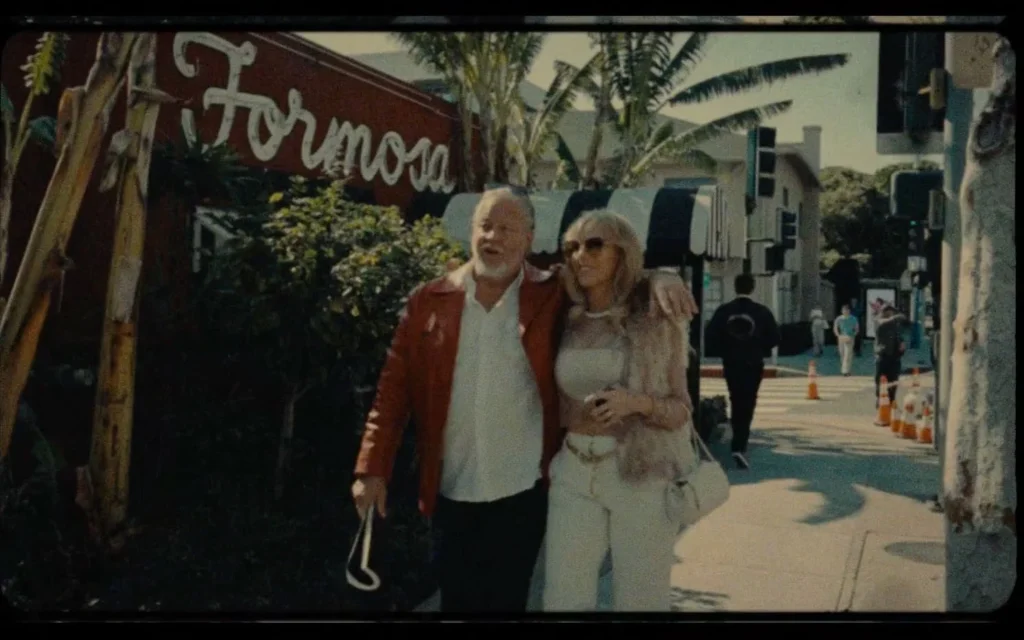
CM: It’s shot entirely in Los Angeles. There’s been a big push to keep productions in California, because even films with huge budgets have found it cost-prohibitive. So, how did you manage to pull off staying in LA on the limited budget that you had?
JL: Obviously, shooting in locations where you have friendly terrain. We had to rent some places, of course, and permit places, but we didn’t have any situations where we needed police on the streets. We were calling in a lot of favors and spending the money wisely, whether it’s a hotel out in Simi Valley or a bar in Santa Monica where I know the owner. These are things that all low-budget filmmakers have to do. It’s always about calling in favors.
RB: And sometimes it takes the boldness of just going out and doing it [guerrilla style] through the use of an iPhone, in addition to a Blackmagic Camera. Hollywood has so many landmarks, so you’ll see some familiar things. I love shooting in LA. This is an LA story, so it has to be in LA.
CM: When I talk to actor/filmmakers, I’m always interested in hearing about their casting process. Because so often actors are at the mercy of someone else’s decisions, what is it like when you are the decision-maker, filling out the roles for the film?
JL: We both teach acting, and we’ve both been here long enough to have so many friends who are so talented and worthy of roles. Often when I’m writing, I hear their voices in my head, then I’ll continue down that path of tailoring the role to that actor friend of mine. Then, you hope that they like it and say yes. Other times, I have wish lists of actors I’ve worked with over the years or admire that I think I can reach out to without too many obstacles in my way. The cautionary tale about casting is when you make offers prematurely and then have to come back to them and say that you went another way. That happens for a lot of reasons, and it’s really not fair to get actors’ hopes up and have them think they’re involved in something. So you have to be very cautious not to reach out too soon. The casting part, more often than not, does come in the final stages of getting the train up on the track. If you do it prematurely, too many things can change.
RB: John and I both worked in casting. I owned a company called Compassionate Casting. John worked all over town, casting and directing commercials.
JL: Rachel was a casting director. And I ran sessions for casting directors. We both love the process.
RB: You might have noticed that Fiona Ma, our California State Treasurer, has a cameo in this film. She’s a dear friend of mine, and she’s running for Lieutenant Governor in June, and she is a SAG-AFTRA member. She’s got the bug, and she’s a real supporter of the film industry.
JL: She’s a champion of the arts, which is a win-win.
RB: Khrystyne Haje, who plays my mother, was a former child star. John met her on a film. All these coincidences. He was acting in a film that was being shot at Khrystyne’s house.
JL: We just met as I was acting, and she was there as the location representative. Here’s Khrystyne Haje from Head of the Class. I said, “You have to be in my film!”
RB: We just love actors. I had one student who flew in from Boston. And one actor I met teaching in Mallorca, Werner Daehn, flew in from Germany. Henry Jaglom, my dear friend, when I asked him and he said yes, we were over the moon. Then he invited us to his home to shoot. That was so special. Knowing it’s his last film, it’s heavy on the heart. He’s so beautiful in it.
JL: We’ve had a lot of people say that it’s their favorite scene in the picture, which is very rewarding. It’s the longest scene in the film.
RB: That’s the only scene that’s improvised, like a Jaglom film. It’s the way I had worked with him so long ago in his film Festival in Cannes. So I was able to help out in that way, in terms of casting.
John and I are looking at actor reels for our next film, and it’s interesting listening to John’s take as a director. He’s more interested in the slate, or an actor improvising, or talking about themselves, or doing something to really get a sense of the person. I don’t think actors realize how important that is. Especially when I train actors, it’s somewhat robotic the way they slate. They’re taught to slate without showing their personality. Our friend Jonathan Prince is a showrunner, and he told me, “It’s okay to do something at the beginning. Talk about yourself. Create a funny story.” Now I have a different point of view about it. It’s not so much, Can you read the material? It’s, Do you have the spirit and soul of the character?
JL: You’re looking to feel the energy. The reading of the material is almost the last thing on my mind when I’m looking at a tape. That comes after you’ve already maybe fallen in love with them a little bit. Then you want to see their chops in a reading situation and a chemistry read. But really, when you’re looking at actors, it’s just, What is their essence, and does it fit the essence of what I’ve written? You want actors to surprise you. Go in with a vision, for sure. You don’t want to be a pushover, but you have to go in and say, “At any given moment, the best idea wins.” We all know what happy accidents mean. You leave room for things that you never could have expected.
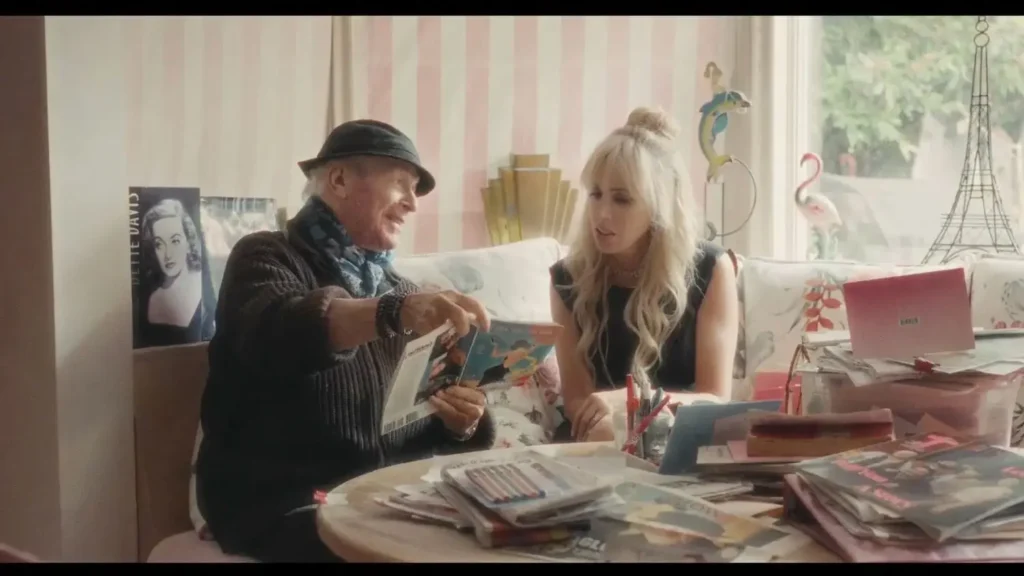
CM: When you are in front of the camera and behind the camera, what is post-production like? You have to have some objectivity about your own performance when you’re piecing all the takes together, right?
JL: When it came to performance — and my editor Giovanni Mocibob could back me up — I didn’t get very precious at all. There are definitely a couple of moments where you look at and go, “Let’s cut it right before that moment when I turn, because that’s not a flattering angle for me.” That’s human nature. The really great thing about editing, though, especially when you write a nonlinear film like this, is that so much is going to be created in the editing room. When Rachel said she didn’t know the vision of the film, she knew what she was being asked to do, and what her role and the basic story were, but looking at it on paper, you can’t really tell what it’s all going to look like. It’s going to be black and white, it’s going to be color, it’s going to be sepia, some of it will look vintage, and when you throw it into a blender, it starts to create something spectacular. It happens in real time in the editing room with a good editor who’s willing to give you ideas. Then you walk away from it and come back to it, and you keep mixing and matching things.
CM: Rachel, could you describe your first moment seeing the fully completed picture, and what that was like?
RB: Sometimes I’d say, “John, when you edit today, please take out your phone and film a little scene.” I was so hungry for it. We saw it in Las Vegas, at the Las Vegas Indie Film Festival. That was the most beautiful screen we had ever seen. I was stunned. I know that I was still very close to it and very logical. But now when I see it, it’s like I’m watching other characters. The movie moves me on such a guttural level, whereas before, I was still the technician watching it. Now I sit back, and it takes me on this ride. I think I was shocked. I was resistant at times. And certainly, vain at times and insecure at times. All the things that actors go through. And now, it’s all changed for me. Now it’s a story, and I’m in love with it. The fact that we’re going to see it screened a few more times here in LA, I can’t wait.
JL: When you work with an actress like Rachel, and then you start post-production, you really do fall back on, It’s a film for the big screen. Regardless of how raw you want your actors to be emotionally, you also want movie stars up there. And when we were looking at the images, I was looking at Rachel going, “That’s a movie star.” If she has an idea of how to soften something or make it look more glamorous, I’m going to always vote on the side of that, because what we want up there are stars. We want glamour, ultimately, no matter how broken down the character is. It’s fun to look up on the screen and see beautiful people. And I don’t think it’s a compromise, I think it’s honoring what it means to be up on the silver screen, because we both love the cinema. Whether it’s La Dolce Vita or Yesterday, Today, and Tomorrow, those characters are in distressful situations, but they’re still movie stars. Ingrid Bergman in Stromboli, you haven’t seen a character more broken down, but she’s still Ingrid Bergman.
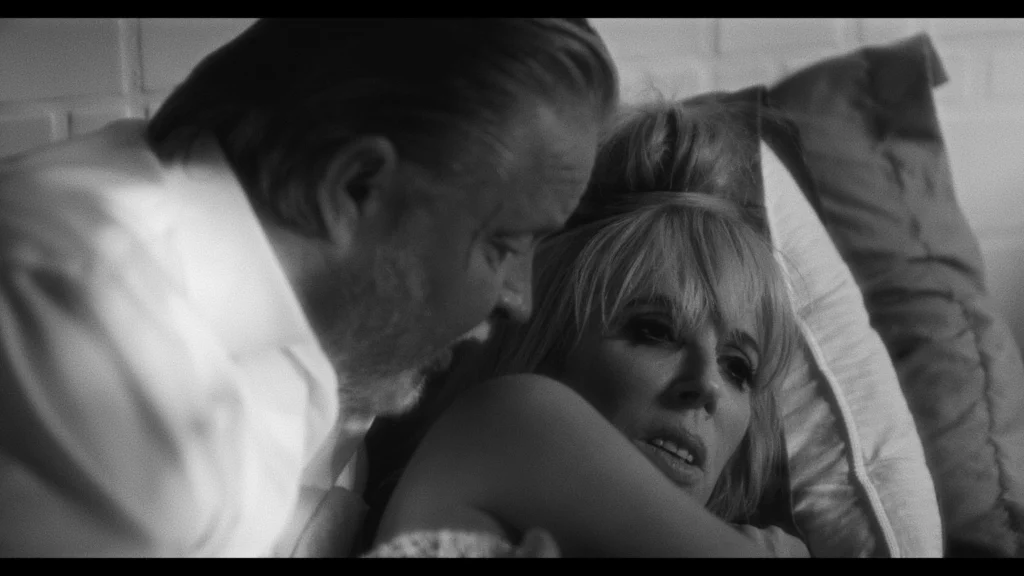
CM: What’s next for both of you, career-wise?
JL: As an actor, I’ve got a couple of films coming out, which I’m excited about. One’s called Bull Run, which is kind of a fun Ferris Bueller/Wall Street hybrid. Another film called The Gardener that I’m really proud of. The next one that I’m writing with Rachel is really exciting, again a Los Angeles story. And I’ve got a film in development in Minneapolis that, sadly for LA, has to be shot in Minnesota. It’s a Minnesota story about the guy who invented rollerblades, so the whole thing needs to take place in the Twin Cities in the late ’70s and early ’80s. That’s in development now.
RB: I have a film called Eight Days to Cabo, which we just went to a screening of. So we’re both very much still in the game. I’m teaching at the Strasberg Theatre. John has his own private class on Melrose. He teaches Meisner, I teach Method. And then, our next film we’re starting, if all goes well, the first week of January. I’m very involved in SAG-AFTRA, and we’ve had some interest in Sacramento with Senator Ben Allen to do a [Everyone Asked About You] screening there to shed light on the subject matter. SAG-AFTRA is doing great in implementing protections for young actors, but we want to keep it alive.
CM: What’s next for Everyone Asked About You?
RB: Well, the big news is we are running for a Spirit Award, the Cassavetes Award. So we’re really hopeful about that. We’ll be at the Laemmle Theater on October 28. We stream that day on Amazon and Tubi. Our last big film festival is the Chelsea Film Festival. We close their festival, which is exciting.
JL: It took us under $100,000 to make the film. Over, if you include all of post. But under $100,000 to put it in the can.
RB: We’re proud of that and want to encourage independent filmmakers. That’s why I was so excited about this, because I’d never produced a film. I’m a producer on this, and it’s so empowering to do your own thing. For years, I’ve been doing YouTube videos and podcasts and pilots and anything I could think of, but now we’re making movies together. And we’re more excited than ever. John and I have been in the business for so long, and we’re like newbies again. My favorite quote for myself is, “Late bloomers stay fresher longer.”
JL: You have to continue to go back and re-stoke those flames that you first loved about Hollywood. It’s really easy to get jaded or cynical or start to say, Oh, this industry, we’re doomed. I’ve never let those thoughts creep into my mind. Art will always win. Storytelling’s not going away. We’ve just got to keep collaborating and being decent to each other.
__
Thanks to Rachel and John for talking to us about EVERYONE ASKED ABOUT YOU. Learn more about the film at everyoneaskedaboutyoumovie.com.
This interview has been edited for length and clarity.
If you’re an independent filmmaker or know of an independent film-related topic we should write about, email blogadmin@sagindie.org for consideration.

